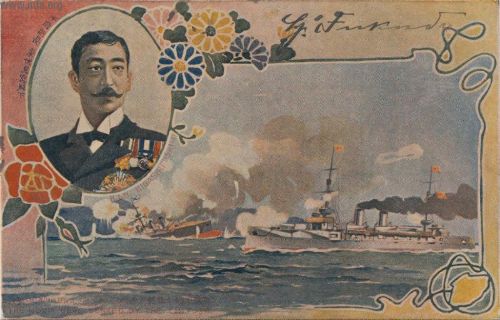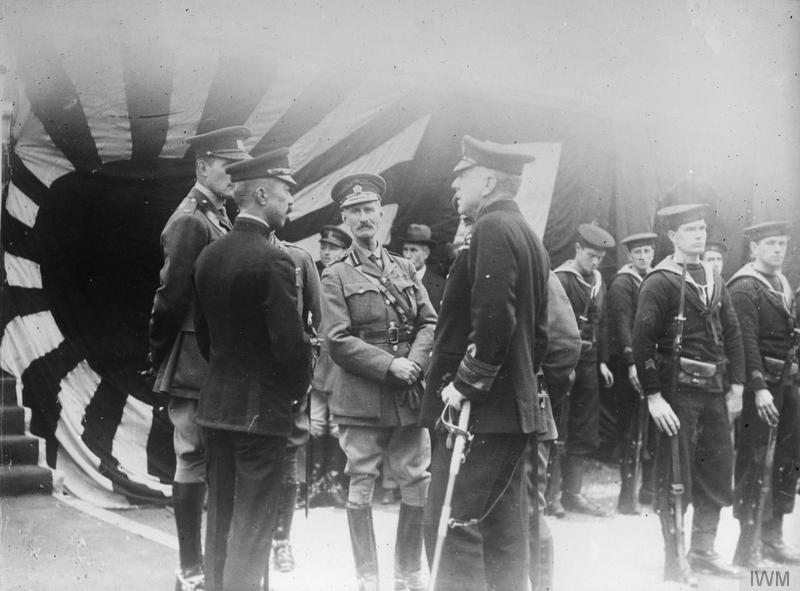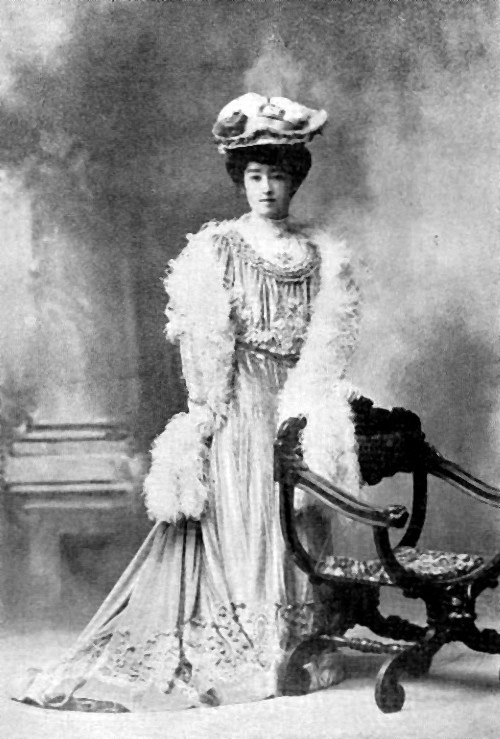1. Early Life
Prince Higashifushimi Yorihito's early years were deeply intertwined with the complex traditions and lineage of the Japanese Imperial Family, marked by several adoptions that shaped his ultimate position.
1.1. Birth and Lineage
Prince Higashifushimi Yorihito was born on September 19, 1867, as the seventeenth son of Prince Fushimi Kuniie, who was the head of the Fushimi-no-miya (伏見宮Fushimi-no-miyaJapanese) house. The Fushimi-no-miya was one of the shinnōke (親王家shinnōkeJapanese) branches of the Imperial Family, historically eligible to succeed to the Chrysanthemum Throne if the main imperial line lacked heirs. His half-brothers included notable figures such as Prince Komatsu Akihito, Prince Kuni Asahiko, Prince Kitashirakawa Yoshihisa, Prince Kan'in Kotohito, and Prince Fushimi Sadanaru. He was originally known as Prince Fushimi Sadamaro.
1.2. Adoptions and Succession
The course of Prince Yorihito's early life was significantly shaped by a series of adoptions within the Imperial Family. In 1868, during the Meiji Restoration, he was initially slated to succeed the head of the Enman-in (円満院Enman-inJapanese) temple, a plan that ultimately did not materialize due to the changing political landscape. In February 1869, he was adopted into the Yamashina-no-miya (山階宮Yamashina-no-miyaJapanese) household, headed by his elder half-brother Prince Yamashina Akira. This was followed by another adoption into the Komatsu-no-miya (小松宮Komatsu-no-miyaJapanese) house in December 1885, where he became the adoptive son of Prince Komatsu Akihito.
In May 1886, Emperor Meiji formally adopted him as a potential heir to the throne, and Prince Yorihito received the shinnō senka (親王宣下Imperial Proclamation of Prince StatusJapanese), changing his name to Yorihito. This was the last time a member of the Imperial Family was directly granted Prince status by imperial proclamation. Upon the death of Prince Komatsu Akihito on February 3, 1903, Prince Yorihito succeeded to the newly established Higashifushimi-no-miya (東伏見宮Higashifushimi-no-miyaJapanese) title, becoming its second and final head. Historical accounts suggest that Prince Yorihito and his adoptive father, Prince Komatsu Akihito, had a strained relationship during the latter's lifetime, further complicating his unique familial path.
1.3. Marriage Proposal with the Kingdom of Hawaii
A significant historical event involving Prince Yorihito occurred in 1881, when King David Kalākaua, the last reigning monarch of the Kingdom of Hawaii, visited Japan. This visit marked a historic first, as King Kalākaua was the inaugural foreign head of state to formally visit Japan. During discussions with Emperor Meiji at the Akasaka Palace, King Kalākaua put forth several proposals, including a notable one for a marital alliance between the royal houses of Japan and Hawaii. He suggested that his niece, Princess Kaʻiulani, who was then five years old, marry Prince Yorihito, who was thirteen years old and still known as Prince Yamashina Sadamaro.
Japan, however, declined the proposal. At the time, the newly formed Meiji government was intensely focused on its own national development and industrialization, committing all available resources to domestic growth and military modernization. The prospect of such an international marriage, especially one that could potentially antagonize the United States due to its growing influence in Hawaii, was deemed too great a risk. This pragmatic rejection, while understandable from Japan's strategic viewpoint, ultimately left Hawaii vulnerable to Western influence and significantly impacted the kingdom's eventual fate, leading to its overthrow and annexation by the United States.
2. Military and Diplomatic Career
Prince Higashifushimi Yorihito dedicated his life to service within the Imperial Japanese Navy and played a notable role in Japan's international diplomacy during a period of rapid modernization.
2.1. Education and Early Service
Prince Yorihito began his naval training with a brief enrollment at the Imperial Japanese Naval Academy. Recognizing the need for advanced military education, he was subsequently sent abroad to study at the Dartmouth Royal Naval College in Great Britain. Following his studies in Britain, he moved to France in 1887, where he continued his naval education at the École Navale in Brest. He successfully graduated from the French naval academy in July 1890 and was commissioned as a Ensign in the Imperial Japanese Navy the following month. Prince Yorihito returned to Japan on October 7, 1891, and immediately began active service on various vessels within the Imperial Japanese Navy fleet.
2.2. Major Engagements and Promotions
Prince Yorihito's early career involved direct combat experience. He served on various vessels, including the protected cruiser Naniwa as a division officer during the First Sino-Japanese War. In 1901, he was appointed executive officer of the armored frigate Fusō. His command experience expanded during the Russo-Japanese War; he served as captain of the protected cruiser Chiyoda starting January 12, 1905, and later the protected cruiser Takachiho in 1905. For his distinguished service in the Russo-Japanese War, he was awarded the Order of the Golden Kite (3rd Class) on April 1, 1906. After the war concluded, he continued his command as captain of the armored cruiser Kasuga before joining the Imperial Japanese Navy General Staff later in 1906. His steady rise through the ranks continued with promotions to Rear Admiral on December 1, 1909, Vice Admiral on August 31, 1913, and ultimately to Admiral on July 2, 1918.
2.3. Key Commands and Diplomatic Roles
Beyond his combat duties and promotions, Prince Yorihito held significant leadership and diplomatic positions. In December 1911, he was appointed Commander of the Yokosuka Reserve Fleet, followed by Commander of the Yokosuka Naval District Fleet in April 1913. He served as the Commander-in-Chief of the Yokosuka Naval District from December 1, 1916, to December 1, 1917. Subsequently, he commanded the IJN 2nd Fleet as its Commander-in-Chief from December 1, 1917, to June 13, 1918.
His diplomatic responsibilities included representing Emperor Meiji alongside Togo Heihachiro and Nogi Maresuke at the coronation ceremonies of King George V of Great Britain on June 30, 1911. From 1918 to 1919, Prince Yorihito made a final diplomatic visit to the United Kingdom. During this visit, he presented King George V with the Japanese honorific of Gensui (accompanied by its distinctive badge and sword) and, in return, was awarded the prestigious Royal Victorian Chain by the King. In addition to his military and diplomatic duties, he also served as the president of the Imperial Water Rescue Association and as the honorary president of the Japan-France Association, reflecting his broader engagements. He was also a nominal member of the House of Peers, though he never attended sessions.


3. Personal Life
Prince Higashifushimi Yorihito's personal life, particularly his marriages, had significant implications for the continuation of his imperial lineage.
3.1. Marriages and Children
Prince Higashifushimi Yorihito was married twice. His first marriage was to Yamauchi Yaeko, the third daughter of Yamauchi Toyoshige, who was the former lord of the Tosa Domain. The marriage took place on July 7, 1892. However, this union ended in divorce on April 30, 1896. Yaeko subsequently remarried Akimoto Okitomo, a viscount.
On February 10, 1898, Prince Yorihito married his second wife, Iwakura Kaneko (1876-1955). Kaneko was the eldest daughter of Prince Iwakura Tomosada and a granddaughter of the prominent statesman Iwakura Tomomi. Despite their marriage, Prince Yorihito and Princess Kaneko remained childless.

3.2. Extinction of the Higashifushimi-no-miya Lineage
The absence of biological children meant that the Higashifushimi-no-miya lineage, established by Prince Yorihito, faced extinction upon his death. When Prince Yorihito passed away on June 27, 1922, the line officially became extinct.
To prevent the complete disappearance of the Higashifushimi name and its historical significance within the Imperial Family, Emperor Hirohito intervened in 1931. He directed his brother-in-law, Prince Kuni Kunihide, the third son of Prince Kuni Kunihiko, to leave his Imperial Family status. Prince Kunihide then adopted the Higashifushimi name, becoming Count Higashifushimi Kunihide (hakushaku 伯爵hakushakuJapanese under the kazoku 華族kazokuJapanese peerage system). This ensured the continuation of the Higashifushimi name, albeit no longer as an imperial branch but as a noble family. Kunihide later became the head priest of Shoren-in (青蓮院Shoren-inJapanese) temple in Kyoto, adopting the religious name Higashifushimi Jiko.
Following the abolition of the cadet branches of the Imperial Family by the American occupation authorities on October 14, 1947, Dowager Princess Higashifushimi Kaneko became a commoner. She resided in Tokyo until her death in 1955.
4. Honors and Awards
Prince Higashifushimi Yorihito received numerous honors and awards throughout his distinguished military and diplomatic career, recognizing his service to the Imperial House and the nation.
- November 20, 1895: Order of the Golden Kite (5th Class)
- April 1, 1906: Order of the Golden Kite (3rd Class) and the Russo-Japanese War Victory Medal
- November 7, 1915: A set of gold cups and the 1914-1915 War Medal
- November 1, 1920: A set of gold cups and the 1914-1919 War Service Medal
- June 27, 1922: Collar of the Supreme Order of the Chrysanthemum (posthumous)
5. Death and Posthumous Recognition
5.1. Death
Prince Higashifushimi Yorihito passed away on June 27, 1922, at the age of 56.
5.2. Posthumous Titles and Honors
Upon his death, Prince Higashifushimi Yorihito was posthumously elevated with the highest honors in recognition of his extensive and dedicated service. He was conferred the supreme military rank of Marshal-Admiral (Gensui 元帥GensuiJapanese) and was also awarded the prestigious Collar of the Supreme Order of the Chrysanthemum, the highest order of chivalry in Japan. These posthumous recognitions underscored his profound contributions to the Imperial Japanese Navy and the nation's international standing.
6. Chronology
| Year | Date | Event |
|---|---|---|
| 1867 | September 19 | Born |
| 1869 | February 24 | Adopted by Prince Yamashina Akira |
| 1877 | March 1 | Entered Imperial Japanese Naval Academy (as a preparatory student) |
| 1884 | April 27 | Departed for study in United Kingdom |
| 1885 | December 2 | Adopted by Prince Komatsu Akihito |
| 1886 | May 1 | Received Imperial Proclamation of Prince Status (shinnō senka) from Emperor Meiji, name changed to Yorihito |
| 1887 | July | Transferred to France, entered École Navale in Brest |
| 1889 | July 15 | Received the Grand Cordon of the Order of the Chrysanthemum |
| 1890 | February | Became a nominal member of the House of Peers (never attended) |
| 1890 | July 26 | Graduated from École Navale |
| 1890 | August 14 | Commissioned as Ensign, continued studies in France |
| 1891 | October 7 | Ordered to return to Japan |
| 1892 | March 27 | Appointed division officer on Takachiho |
| 1892 | July 7 | Married Yamauchi Yaeko |
| 1892 | September 28 | Appointed division officer on Naniwa |
| 1893 | June 22 | Dispatched to Europe and the United States |
| 1894 | August 3 | Ordered to return to Japan |
| 1894 | October 5 | Appointed acting division officer on Naniwa |
| 1894 | December 9 | Promoted to Lieutenant, appointed division officer on Naniwa |
| 1895 | July 29 | Appointed section leader of the Yokosuka Torpedo Corps |
| 1895 | November 27 | Appointed division officer on Chiyoda |
| 1896 | April 30 | Divorced from Princess Yaeko |
| 1897 | April 30 | Assigned to the Imperial Japanese Navy General Staff Intelligence Section |
| 1898 | February 10 | Married Iwakura Kaneko |
| 1898 | April 19 | Appointed division officer on Matsushima |
| 1898 | September 1 | Appointed division officer on Yashima |
| 1899 | September 29 | Promoted to Commander, appointed division officer on Yashima |
| 1901 | January 22 | Appointed division officer on Azuma |
| 1901 | December 12 | Appointed executive officer on Fusō |
| 1902 | May 23 | Became a special lecturer at the Naval War College |
| 1903 | January 31 | Established the Higashifushimi-no-miya Imperial House |
| 1903 | September 26 | Promoted to Commander, enrolled as a special student at the Naval War College |
| 1903 | December 18 | Appointed executive officer on Chitose |
| 1905 | January 12 | Promoted to Captain, appointed captain of Chiyoda |
| 1905 | December 20 | Appointed captain of Takachiho |
| 1906 | April 1 | Awarded Order of the Golden Kite (3rd Class) |
| 1906 | April 7 | Appointed captain of Kasuga |
| 1906 | December 24 | Assigned to the Imperial Japanese Navy General Staff |
| 1909 | December 1 | Promoted to Rear Admiral |
| 1911 | December 1 | Appointed Commander of the Yokosuka Reserve Fleet |
| 1913 | April 1 | Appointed Commander of the Yokosuka Naval District Fleet |
| 1913 | June 23 | Appointed a member of the Council of the Imperial House |
| 1913 | August | Appointed President of the Imperial Water Rescue Association |
| 1913 | August 31 | Promoted to Vice Admiral, appointed member of the Naval General Staff Council, assigned to the Naval General Staff |
| 1916 | December 1 | Appointed Commander-in-Chief of Yokosuka Naval District, and member of the Naval General Staff Council |
| 1917 | December 1 | Appointed Commander-in-Chief of the IJN 2nd Fleet |
| 1918 | June 13 | Reappointed member of the Naval General Staff Council |
| 1918 | July 2 | Promoted to Admiral, appointed Supreme War Councillor |
| 1918 | September 26 | Dispatched to the United Kingdom |
| 1919 | January 7 | Returned to Japan |
| 1919 | October 26 | Welcomed Prince Kunihide into the Higashifushimi-no-miya residence (as if an adopted son) |
| 1922 | June 27 | Died, posthumously granted the title of Marshal-Admiral and the Collar of the Supreme Order of the Chrysanthemum |
7. Assessment and Legacy
Prince Higashifushimi Yorihito's life and career represent a significant chapter in the history of the Imperial Japanese Navy and the broader context of Japan's modernization during the Meiji period and early Taishō period. His extensive education abroad in naval academies in Britain and France laid the groundwork for a distinguished military career, enabling him to contribute to the professionalization and modernization of the Imperial Japanese Navy. His active participation in the First Sino-Japanese War and the Russo-Japanese War showcased his combat leadership and commitment, leading to his steady ascent through the ranks to Admiral and ultimately Marshal-Admiral.
Beyond his military prowess, Prince Yorihito served as an important diplomatic bridge for Japan on the international stage. His representation of the Emperor at major global events, such as King George V's coronation, and his later exchange of honors with the British monarch, underscored Japan's growing presence and influence in the global arena. These diplomatic engagements were crucial in fostering international relations and projecting Japan's image as a modern, capable nation.
The extinction of the Higashifushimi-no-miya lineage upon his childless death is a notable aspect of his legacy. While the imperial branch itself ceased to exist, the family name was preserved through the strategic adoption orchestrated by Emperor Hirohito, demonstrating the Imperial Household's efforts to maintain its historical continuity and prestige. Prince Yorihito's life is a testament to the dedication and responsibilities borne by members of the Imperial Family in an era of profound national transformation, as Japan transitioned from an isolated feudal society to a formidable global power.